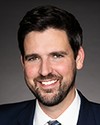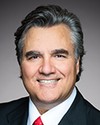Thank you, Madam Chair.
I'm delighted to be appear before the committee today with my colleagues.
We've been asked to appear today to speak about the important work that Infrastructure Canada is doing to support the Government of Canada's commitments to invest in Canadian communities. As the chair just mentioned, our minister is looking forward to coming and meeting with you in a few weeks' time on April 13.
I won't repeat the introductions of all of the colleagues who are with us today. We have representatives from the ministry of infrastructure and communities, and also members of Minister Sohi's portfolio.
We will be pleased to give you an update on the progress we have made since our last appearance before the committee.
As you will have noted, Infrastructure Canada has requested $7 billion for the upcoming fiscal year. This forecast reflects the progress the department is making in delivering Investing in Canada, the long-term infrastructure plan. It also indicates the anticipated reimbursements to proponents whose projects are already underway, but it does not include the funds mentioned in yesterday's budget.
The Government of Canada committed to working closely with partners to accelerate the funding being delivered under legacy programs—such as the New Building Canada Fund—and to quickly move forward with new programs to support projects across the country.
Of those legacy programs, $800 million was committed in the last year, and projects are moving forward. The remaining $30 million is being transferred directly into the federal Gas Tax Fund. This approach is generating results. For example, in Newfoundland 20 projects were approved in the last year, whereas no projects had been approved in the previous three years.
With regard to the new programs announced in budget 2016, the department has now approved more than 1,100 projects under the public transit infrastructure fund and the clean water and wastewater fund.
In Trois-Rivières the city is renewing water pipes and investing in the Matton pumping station.
Surrey, British Columbia, has been investing in the planning required to expand key transit lines to help people get to and from work and to reduce greenhouse gas emissions.
In the north, Iqaluit is also making use of phase one funding with the construction of a new secondary wastewater treatment plant. This means that wastewater will be further purified before it is released into the environment. Once complete, the project will help Iqaluit foster sustainable development and meet regulatory requirements for years to come.
Caverly Road in Aylmer, Ontario, was revitalized with new curbs, sidewalks, as well as stormwater and watermain infrastructure. New asphalt, permanent pavement markings, and a cycling route were added to improve safety for the many commuters who will use this roadway daily.
There is more work underway across the country. The new Champlain Bridge Corridor Project, for example, has been under construction for over 18 months and remains on track to be open to the public for December 2018. This summer will be a particularly important construction season as the main bridge structure continues to take form and work progresses on other key components of the corridor.
In addition, the preliminary work for the Gordie Howe International Bridge continues and the request for proposals process is underway. Infrastructure Canada has acquired all of the necessary Canadian properties and we are continuing to complete the acquisitions in the United States. The Prime Minister's recent meeting with the President demonstrated that this project remains a priority for both countries.
The department also continues to work closely with the folks at PPP Canada on the new Canadian Infrastructure Bank. The Bank will be both an important source of funding and a centre of excellence for infrastructure investments.
Infrastructure Canada continues to make significant investments in communities across Canada. The estimates we have put forward will enable the department to move forward on our core funding commitments. I am sure my colleagues both in the department and from the portfolio agencies would be happy to respond to any questions you might have.
Thank you, Madam Chair.










